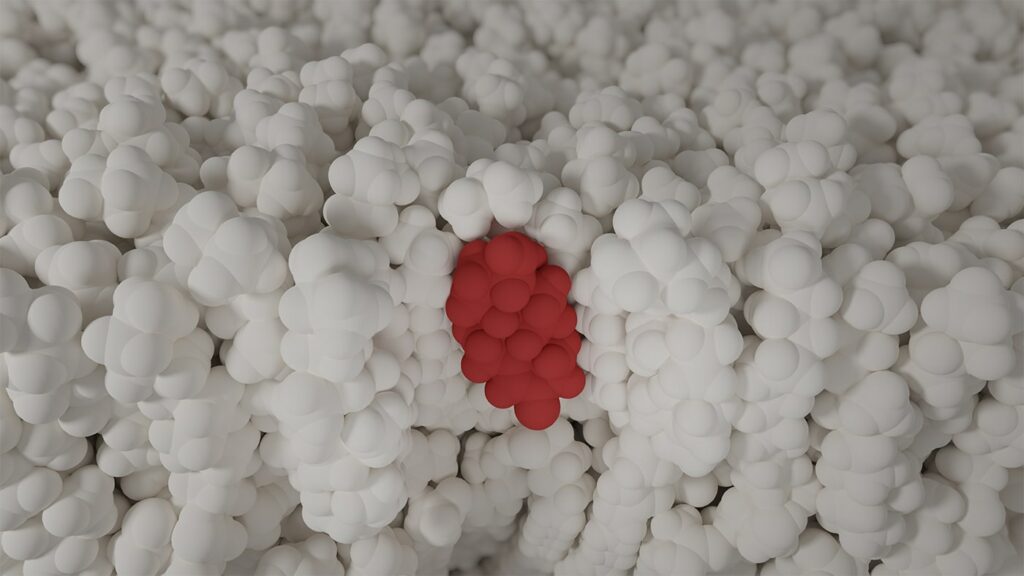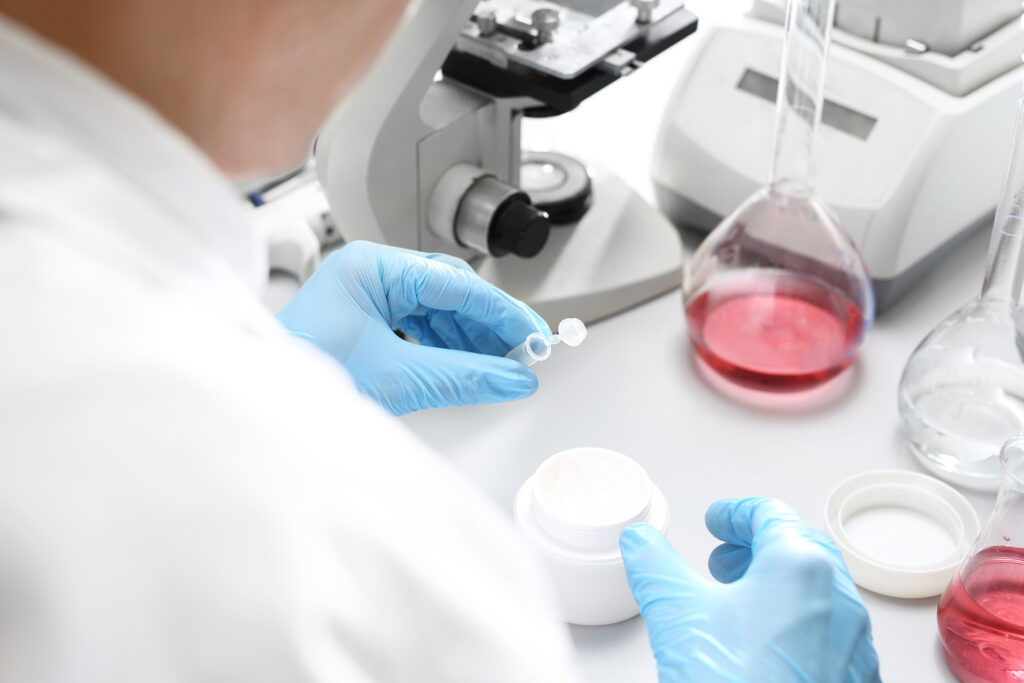I work for a CRO company
As a research partner, in the early development process, it is important to provide state-of-the-art services in order to satisfy the customer’s needs. Improved understanding how an API passes through the skin barrier and the mechanism of action of permeation enhancing excipients will give both you and your partners an advantage in the development process.
→ Understand the permeation challenge
→ Improved transdermal formulations
→ Integrate molecular modeling in your development processes

Understand the permeation challenge
The passive transport of an API across the human skin barrier is a complex process, which is very challenging to fully understand using only experimental methods.
With our skin model it is possible to obtain a predicted permeation rate across the stratum corneum, in silico, together with an intricate understanding of the API’s interaction with the barrier structure at an atomistic resolution.
This data enables us to help you make informed decisions in regards to the identification of your customers permeation challenges, and serves as a guide in the design of optimal transdermal formulations.


Improved transdermal formulations
Knowledge of how a formulation affects the barrier is of utmost importance when designing an effective transdermal delivery system for an API. We can help you understand where the API is passing slowly through the human skin barrier, and thus enhance your decision making in the choice of suitable permeation enhancers.
Our atomic resolution model gives us detailed information regarding the effect of each permeation enhancer, at concentrations based on the formulation. It also enables us to predict the partitioning of your customer’s API from the formulation and into the skin’s barrier structure.
This data can then be used to optimize the API solubility in the formulation, which will make it possible to improve the flux across the skin.
Integrate molecular modeling in your development processes
A successful development of a transdermal drug formulation not only requires a solid understanding of the processes involved in the mechanism of action of an API, but also an optimized delivery vehicle across the human skin barrier.
Relying solely on conventional experimental techniques during the development of a transdermal delivery system for an API offers limited insight into the molecular interactions during the permeation process.
Using our skin model we can deliver data which complements your existing processes, and will enhance your final data sets. The extra knowledge that is gained from our simulation methods can give you an advantage compared to your competitors.
